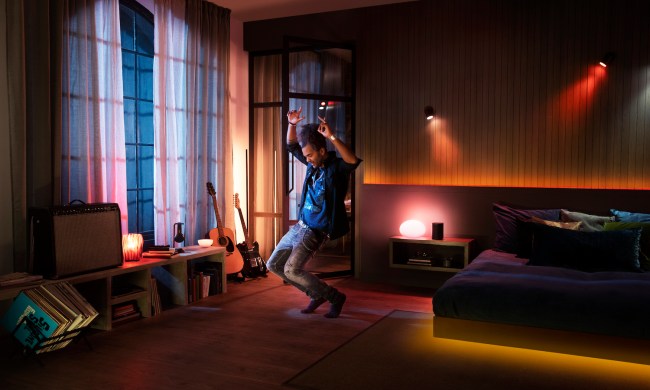
A new kind of virtual experience could revolutionize how music stars and other famous folks interact with their fans.
Described by the U.K. startup behind it as “the world’s first voice-interactive digital portrait,” London-based Forever Holdings’ debut In the Room With experience lets you chat with music legend Nile Rodgers about his life and work — as if you were right there with him.
To make it happen, Rodgers recently spent time recording answers to 350 questions submitted by fans. After that, software designers built a program that uses voice recognition and machine learning algorithms to match Rodgers’ answers to the questions that you ask when you meet him online.
“Close to a real meeting”
”More than five hours of exclusive high-definition footage allows you to delve deep into the life and works of this remarkable man in a one-to-one encounter that is as close as possible to a real meeting,” the National Portrait Gallery, which also collaborated on the project, said on its website.
“Ask him about his unique contribution to the music industry such as how he worked with David Bowie on the classic Let’s Dance, his work as a legendary songwriter, or what it was like working with superstars like Diana Ross, Madonna, or Lady Gaga.” Or simply ask him if he’s one for eating breakfast.
Rodgers said he hopes the experience will help fans understand “more about my journey, my life in the music industry, and what I have been trying to say through my music,” adding, “It gives people I might never get to meet the opportunity to ask me questions and share thoughts in a completely new way. I love this because I believe that at the foundation of music are human connections and a human story that needs to be told.”
A bit like Siri
If you ask a question that wasn’t covered during the recording session, the American music star will let you know and suggest you ask about something else. And if you get star struck and your mind goes blank, the “suggestions” button can help you out.
The team says the software works a bit like Siri, and that just like any voice-activated software, it won’t always hear you right. It adds that besides entertainment, the platform could also be useful for other sectors such as education.
You can experience a free (though limited) version of the virtual interview with Nile Rodgers using several hand-picked questions at hereintheroom.com. An online pass to access the full content costs £20 (about $27), a portion of which will go to the National Portrait Gallery. The content will work on any device with a browser.
The team is also developing a 3D VR experience of the interview that it’s planning to make available soon.


